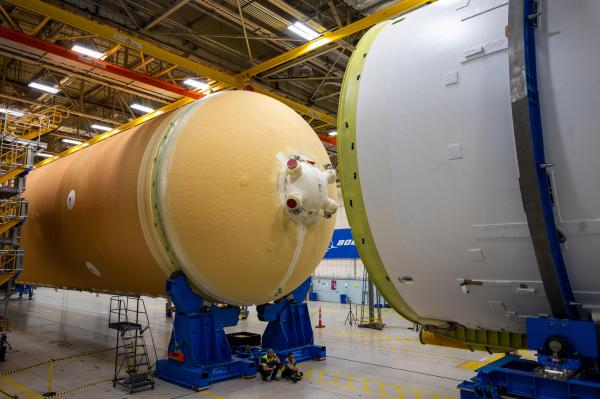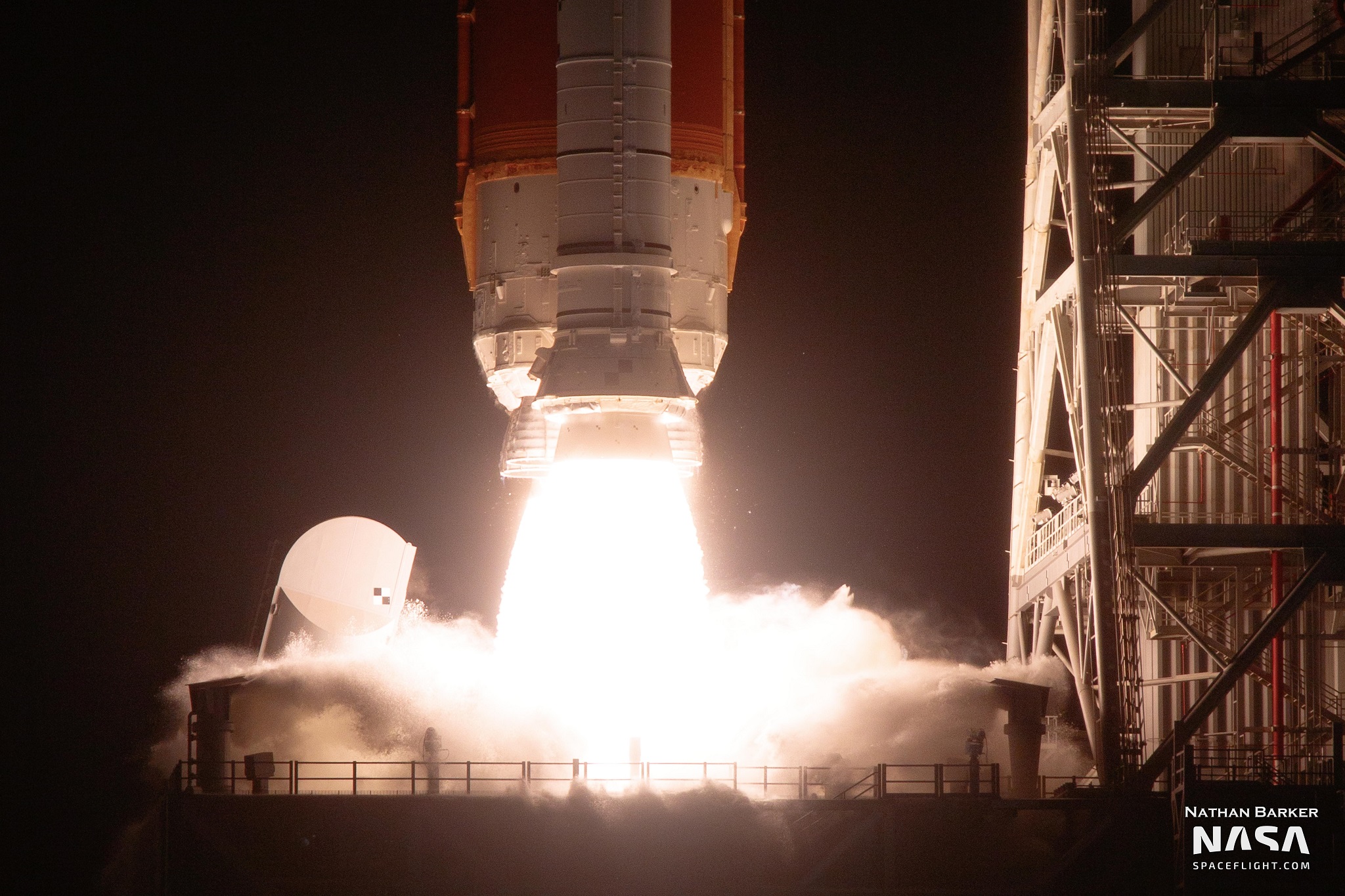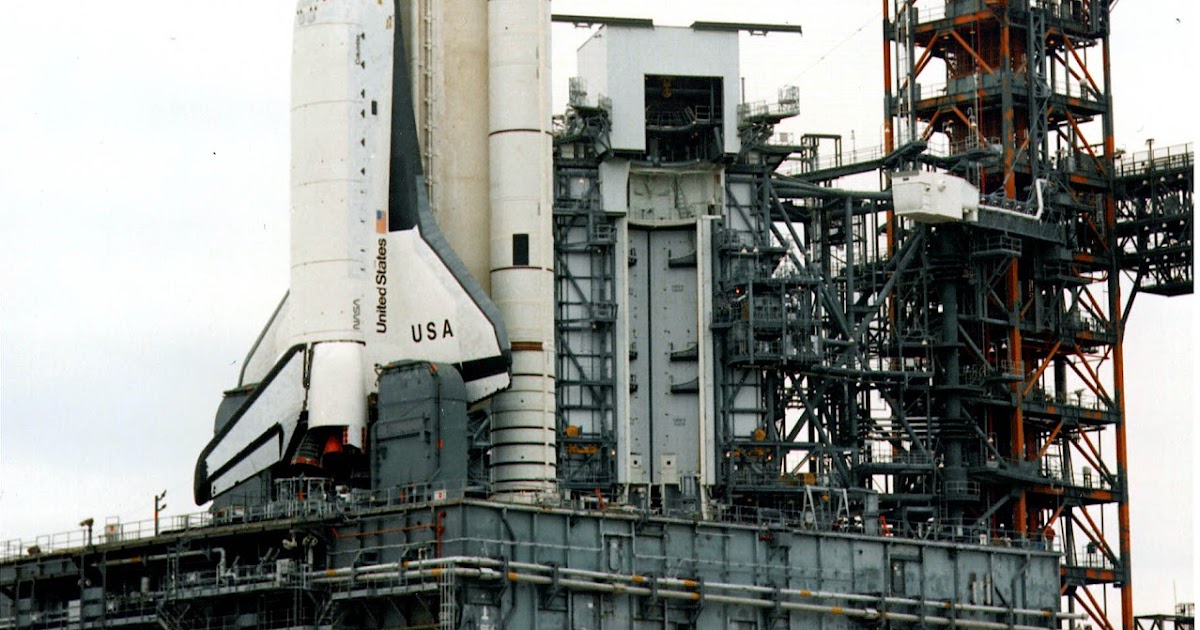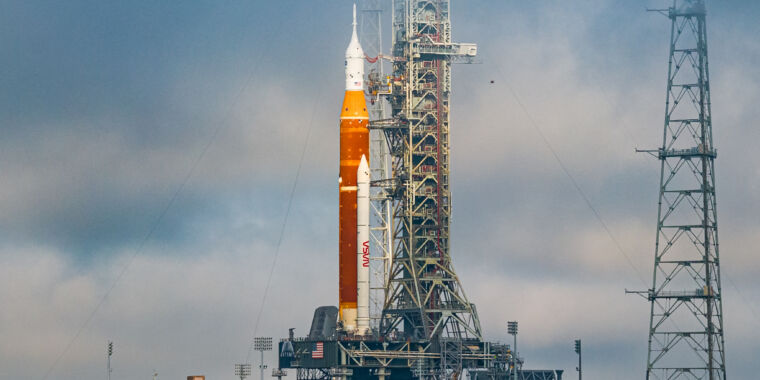Blasted autocorrect..collidersCollides, rockets and carriers are rather similar.
Collides?
At least when you flip a toggle it doesn’t argue with you…
Blasted autocorrect..collidersCollides, rockets and carriers are rather similar.
Collides?

Artemis 1 moon rocket, NASA's most powerful ever, aced its debut launch, agency says
"The first launch of the Space Launch System rocket was simply eye-watering."www.space.com
Musk has been flying rockets since before SLS was officially a thing. SLS remains a bloated unnecessary monstrosity.Is it me, or does the hostility level towards SLS feel muted now that it has proven itself and with Musk’s project still on the dirt pile?
It's bloated, far from optimized, and will eventually be unnecessary. But Superheavy hasn't flown yet and the last Starship flight was over a year and a half ago. We haven't seen the newest Raptor design fly and we haven't seen the arms catch a stage on its way down. At the current rate of schedule slip Artemis II might be back on the ground before Dear Moon has been stacked. And the CEO seems to be spending a lot less time in Boca Chica lately. Calls to end SLS will remain pretty quiet until Starship makes some big steps.Musk has been flying rockets since before SLS was officially a thing. SLS remains a bloated unnecessary monstrosity.Is it me, or does the hostility level towards SLS feel muted now that it has proven itself and with Musk’s project still on the dirt pile?
Admittedly it would be preferable if Musk would stop screwing around with Twitter, but I'm honestly not certain if he is a driving force behind progress on Starship at this point. Perhaps it would be best if Musk would go ahead and buy Canada from the WEF. I'm unconvinced that it would make one minutes difference one way or the other for the Starship schedule.It's bloated, far from optimized, and will eventually be unnecessary. But Superheavy hasn't flown yet and the last Starship flight was over a year and a half ago. We haven't seen the newest Raptor design fly and we haven't seen the arms catch a stage on its way down. At the current rate of schedule slip Artemis II might be back on the ground before Dear Moon has been stacked. And the CEO seems to be spending a lot less time in Boca Chica lately. Calls to end SLS will remain pretty quiet until Starship makes some big steps.Musk has been flying rockets since before SLS was officially a thing. SLS remains a bloated unnecessary monstrosity.Is it me, or does the hostility level towards SLS feel muted now that it has proven itself and with Musk’s project still on the dirt pile?
It's bloated, far from optimized, and will eventually be unnecessary. But Superheavy hasn't flown yet and the last Starship flight was over a year and a half ago.

And the CEO seems to be spending a lot less time in Boca Chica lately.
but I'm honestly not certain if he is a driving force behind progress on Starship at this point.
Liquid hydrogen tank for Artemis III prepares for next production phase
NASA technicians at Michoud Assembly Facility have moved on to complete the next stage.
In New Orleans, the technicians at NASA’s Michoud Assembly Facility have taken the next step forward in the production of the liquid hydrogen tank for the Artemis III mission.
It has entered a phase to prepare it to be part of a number of activities in the manufacturing process.
The technicians have moved the liquid hydrogen tank of NASA’s Space Launch System (SLS) rocket to Cell A. There, the tank’s dimensions will undergo white light scans to prepare it for a number of activities that it must undergo throughout the manufacturing process.

This flight hardware will be critical to the Artemis III mission, which will be one of the first Artemis missions to feature a human crew.
The tank in question has a capacity of 537,000 gallons of liquified H2, which is cooled to a temperature of about -258 Celsius degrees. It is the largest of the five components comprising the 64.6-meter-tall core stage of the rocket.
The liquid hydrogen tank is located between the intertank and engine portions of the rocket’s core stage.
The liquified H2 tank is found between the rocket core stage’s intertank and engine components. Both the H2 hardware and the liquified oxygen tank will be necessary as the propellent used for the four RS-25 engines at the base of the core stage. This fuel is used for the production of the over two million pounds of thrust that are necessary to successfully and safely launch the NASA Artemis missions that are headed to the Moon.
This is far from the first time that NASA has used H2 as a fuel for its missions to space. As was reported at the end of last year by Hydrogen Fuel News, it has already been using liquified H2 to propel its equipment into and beyond the Earth’s atmosphere.
Artemis III Landing Region Candidates
Liquid hydrogen offers many advantages as a rocket fuel, as the element with the lightest molecular weight, but that will also burn at a super-intense 3038 Celsius degrees. When that fuel is combined with liquefied oxygen, it provides the maximum specific efficiency when compared with any other known rocket propellant.
Metallic Hydrogen?Some news concerning the production of the Artemis-III first-stage LH2 tank:Liquid hydrogen tank for Artemis III prepares for next production phase
Liquid hydrogen tank for Artemis III prepares for next production phase
January 11, 2023 0 By JULIE CAMPBELL
NASA technicians at Michoud Assembly Facility have moved on to complete the next stage.
In New Orleans, the technicians at NASA’s Michoud Assembly Facility have taken the next step forward in the production of the liquid hydrogen tank for the Artemis III mission.
It has entered a phase to prepare it to be part of a number of activities in the manufacturing process.
The technicians have moved the liquid hydrogen tank of NASA’s Space Launch System (SLS) rocket to Cell A. There, the tank’s dimensions will undergo white light scans to prepare it for a number of activities that it must undergo throughout the manufacturing process.

This flight hardware will be critical to the Artemis III mission, which will be one of the first Artemis missions to feature a human crew.
The tank in question has a capacity of 537,000 gallons of liquified H2, which is cooled to a temperature of about -258 Celsius degrees. It is the largest of the five components comprising the 64.6-meter-tall core stage of the rocket.
The liquid hydrogen tank is located between the intertank and engine portions of the rocket’s core stage.
The liquified H2 tank is found between the rocket core stage’s intertank and engine components. Both the H2 hardware and the liquified oxygen tank will be necessary as the propellent used for the four RS-25 engines at the base of the core stage. This fuel is used for the production of the over two million pounds of thrust that are necessary to successfully and safely launch the NASA Artemis missions that are headed to the Moon.
This is far from the first time that NASA has used H2 as a fuel for its missions to space. As was reported at the end of last year by Hydrogen Fuel News, it has already been using liquified H2 to propel its equipment into and beyond the Earth’s atmosphere.
Artemis III Landing Region Candidates
Liquid hydrogen offers many advantages as a rocket fuel, as the element with the lightest molecular weight, but that will also burn at a super-intense 3038 Celsius degrees. When that fuel is combined with liquefied oxygen, it provides the maximum specific efficiency when compared with any other known rocket propellant.
That would be the ultimate chemical liquid-fuel if it could be manufactured.Metallic Hydrogen?
NASA_SLS
@NASA_SLS
SLS for #Artemis III is in the works at #NASAMichoud! The liquid hydrogen tank, liquid oxygen tank, engine section, forward skirt, and intertank sections of the core stage have all hit major milestones recently. Learn more about
@NASAArtemis
III: https://go.nasa.gov/3H3Qg3t




7:00 AM · Jan 15, 2023·
152.9K
Views
Some more news concerning the construction status of major first-stage components for the Artemis-III launcher:
NASA_SLS
@NASA_SLS
SLS for #Artemis III is in the works at #NASAMichoud! The liquid hydrogen tank, liquid oxygen tank, engine section, forward skirt, and intertank sections of the core stage have all hit major milestones recently. Learn more about
@NASAArtemis
III: https://go.nasa.gov/3H3Qg3t




7:00 AM · Jan 15, 2023·
152.9K
Views
View: https://twitter.com/NASA_SLS/status/1614321465263886337
The inter-tank and thrust structures are complete, the LH2 tank is complete (Just needs its' insulation to be sprayed on) and it would appear the LOX tank will soon be entering final-assembly.
I'd say we're going to see the final assembly of it later on this year.
Good news for Artemis 3.
Before humans step foot on the Moon once again, a few key missions need to take place apart of the Artemis program. Only months ago the Artemis I mission took place and was a major success. Now in early 2023, a bunch of different preparation and work is being completed for Artemis II. A mission NASA is still scheduling not long from now in 2024.
These recent updates include work on Orion’s Service Module, propulsion test projects for the agency, core stage progress, and more. While Artemis II will not land humans on the surface, it will be the first crewed mission on SLS and Orion and travel deep into space before returning to Earth. If successful, this will be the final mission before the long-awaited Artemis III when humans make history once again.
All this being said, there are some schedule concerns the agency is facing. Based on current progress and what’s still left to complete, it’s very possible that Artemis II gets pushed back into 2025 which would have a domino effect on other important missions. Here I will go more in-depth into recent Artemis II progress, what delays and other concerns the agency is facing, what to expect in the coming months, and more.
Some more updates concerning the status of Artemis-II:
Before humans step foot on the Moon once again, a few key missions need to take place apart of the Artemis program. Only months ago the Artemis I mission took place and was a major success. Now in early 2023, a bunch of different preparation and work is being completed for Artemis II. A mission NASA is still scheduling not long from now in 2024.
These recent updates include work on Orion’s Service Module, propulsion test projects for the agency, core stage progress, and more. While Artemis II will not land humans on the surface, it will be the first crewed mission on SLS and Orion and travel deep into space before returning to Earth. If successful, this will be the final mission before the long-awaited Artemis III when humans make history once again.
All this being said, there are some schedule concerns the agency is facing. Based on current progress and what’s still left to complete, it’s very possible that Artemis II gets pushed back into 2025 which would have a domino effect on other important missions. Here I will go more in-depth into recent Artemis II progress, what delays and other concerns the agency is facing, what to expect in the coming months, and more.
That's Congress and lack of support. Everybody hated on Shelby---but he's the only reason we have this capability. Barbra Mikulski probably would have loved to BRAC MSFC and its funs go to climate-sats used to blackmail and Greenbait industry back into the ground. Jim (Byeman) can talk about Marshall resting on its "laurels"---as you can see---we that several SLS cores in the waiting. And we did this with flat NASA budgets---not the Apollo build up.
To steal a quote from J.J.s Pike---I dare Elon to do better.
An Aerojet Rocketdyne RS-25 rocket engine was tested on the Fred Haise Test Stand (formerly A-1 Test Stand) at the John C. Stennis Space Center in Mississippi, on 8 February 2023, at 19:50 UTC (13:50 CST, 14:50 EST). The test had a scheduled duration of about eight-and-a-half minutes (500 seconds) the length of time engines must fire during an actual flight. The engine operated at up to 111% power level, the same level needed to help power NASA’s Space Launch System (SLS).
The RS-68 was simpler. If SuperHeavy works well-could an entire SLS core with a modified RS-68 fit atop it in place of Starship for the ultimate in high-energy upper stages? I know what Byeman will say so I'm asking others.
NASA_SLS
@NASA_SLS
Line it up! Teams at #NASAMichoud have moved the engine section for #Artemis II into place to join it with the rest of the core stage. This section will help power the first crewed
@NASAArtemis
mission. Learn more about the SLS core stage: https://go.nasa.gov/3Y1PlG2







